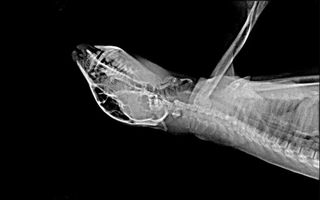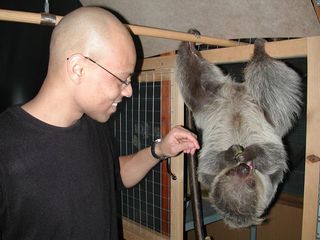Case Solved: Why Sloths Are Slothful

Sloths navigate trees just like monkeys do, a new study finds. The only difference is, sloths use their slothfulness to their advantage.
Using X-ray video, researchers from the University of Jena studied the movement of three two-toed sloths named Julius, Evita and Lisa. As the sloths slowly inched along a branch, hanging upside-down, the researchers watched their muscles and joints move.
"To our great surprise, the locomotion of sloths is basically not so different from the locomotion of other mammals, like monkeys for instance," study researcher John Nyakatura, an evolutionary biologist at the University of Jena in Germany, said in a statement. When the sloths move upside-down along a branch, Nyakatura said, "the position of their legs and the bending of their joints matches exactly those of other mammals in the process of walking."

The research, part of Nyakatura's doctoral thesis, revealed that sloths are lazy for good reason. Their bodies have evolved to have adaptations to save energy, with long arms set on short shoulder blades allowing for a large reach with very little movement. This enables sloths to save energy while making the same movements as other mammals.
"With their mode of life, sloths are filling an ecological niche," said study researcher Martin Fischer, a professor of systematic zoology and evolutionary biology at the University of Jena. "Sloths lead their lives in energy-saving mode."
You can follow LiveScience senior writer Stephanie Pappas on Twitter @sipappas. Follow LiveScience for the latest in science news and discoveries on Twitter @livescience and on Facebook.
Sign up for the Live Science daily newsletter now
Get the world’s most fascinating discoveries delivered straight to your inbox.

Stephanie Pappas is a contributing writer for Live Science, covering topics ranging from geoscience to archaeology to the human brain and behavior. She was previously a senior writer for Live Science but is now a freelancer based in Denver, Colorado, and regularly contributes to Scientific American and The Monitor, the monthly magazine of the American Psychological Association. Stephanie received a bachelor's degree in psychology from the University of South Carolina and a graduate certificate in science communication from the University of California, Santa Cruz.
Most Popular






